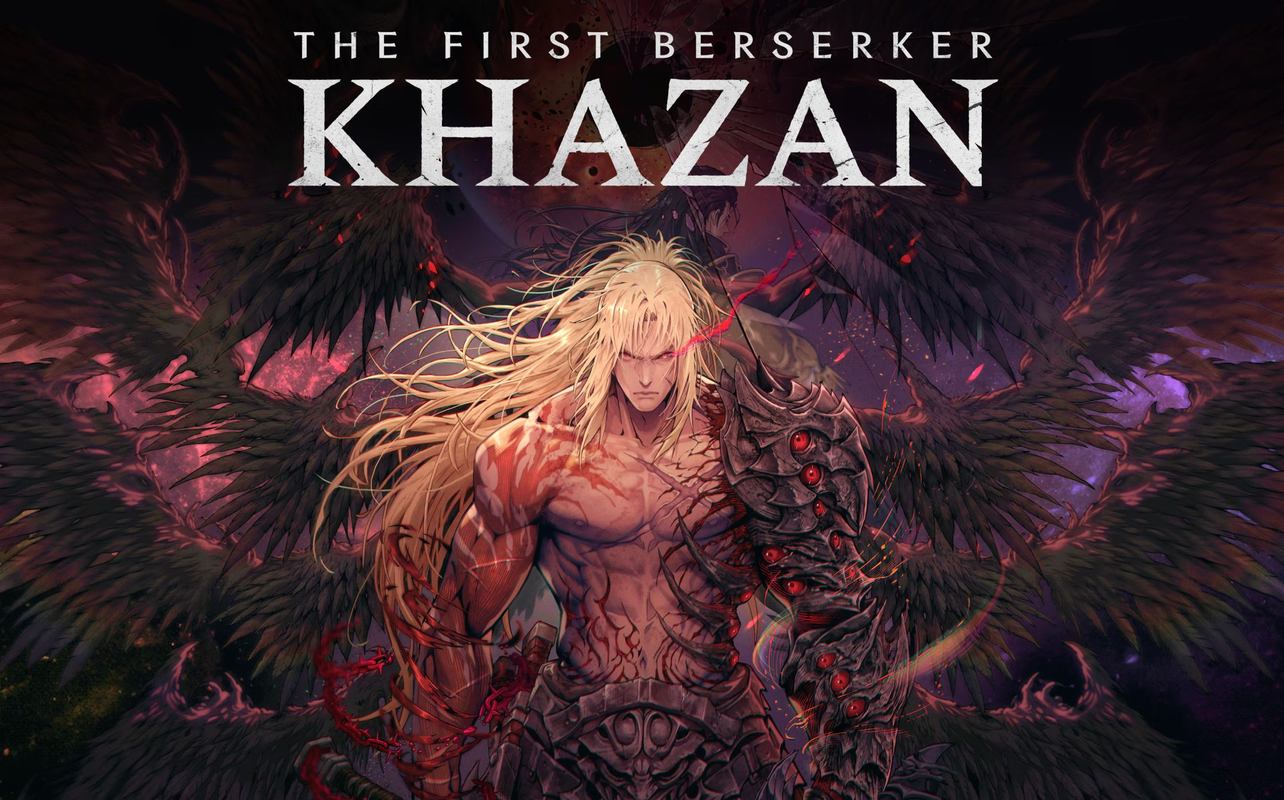
I’ve played plenty of action RPGs that claim to be difficult, but The First Berserker: Khazan doesn’t just test your reflexes—it forces you to fight smarter. This isn’t a game where you can get by on brute force. Whether you’re clashing blades with a towering boss or cutting through enemy patrols, every encounter pushes you to adapt. If you’ve played Sekiro: Shadows Die Twice or Wo Long: Fallen Dynasty, you’ll recognize the mix of aggressive combat and strict timing that makes each fight feel like a challenge worth overcoming.
Developed by Neople, The First Berserker: Khazan brings the Dungeon Fighter Online universe to a new audience, but no prior knowledge is needed to enjoy it. You play as Khazan, a once-great general who is betrayed, branded a traitor, and left for dead. Broken and barely clinging to life, he’s revived by the Blade Phantom, binding their fates together in a blood-soaked path of revenge. It’s a familiar setup—corrupt rulers, supernatural forces, and a fallen warrior fighting for redemption—but Khazan keeps the focus where it matters most: brutal, skill-based combat.
This game doesn’t just demand patience—it expects you to learn from your mistakes. The toughest fights punish hesitation, while victory comes from mastering attack patterns, timing parries, and knowing when to strike. Whether you’re clearing a mission or taking on one of its toughest bosses, every battle is an opportunity to prove yourself. If you thrive on action RPGs that make you work for every win, Khazan doesn’t disappoint.
A Warrior’s Fall and the Road to Revenge
Khazan was once a trusted general, leading battles in the name of the empire. Then everything fell apart. Branded a traitor, he was captured, his tendons severed, and left for dead. His execution seemed certain—until the Blade Phantom intervened. This mysterious force restored his body, binding itself to him with a purpose of its own. Now, Khazan fights to uncover the truth behind his betrayal and carve a path of revenge.
The game doesn’t lay everything out for you. Instead, it delivers the story through cutscenes, cryptic NPC dialogue, and environmental details. You won’t get long explanations or constant exposition. Some things are clear—who your enemies are and what you need to do—but the full picture only comes together over time. Along the way, you’ll cross paths with allies who shed light on the past and enemies who would rather bury it.
Your choices matter. The game has multiple endings, but they aren’t just handed to you. What you do outside of the main missions—certain side objectives and interactions—shapes the outcome. If you want to see everything, you’ll need to think beyond just cutting down every enemy in sight. The main story stays focused, but these different endings give you more to chase after beyond reaching the final battle.
The narrative keeps things simple, but it gives you a reason to push forward. It’s not the most complex story in an action RPG, but it reinforces the game’s themes of power, betrayal, and survival without slowing things down.
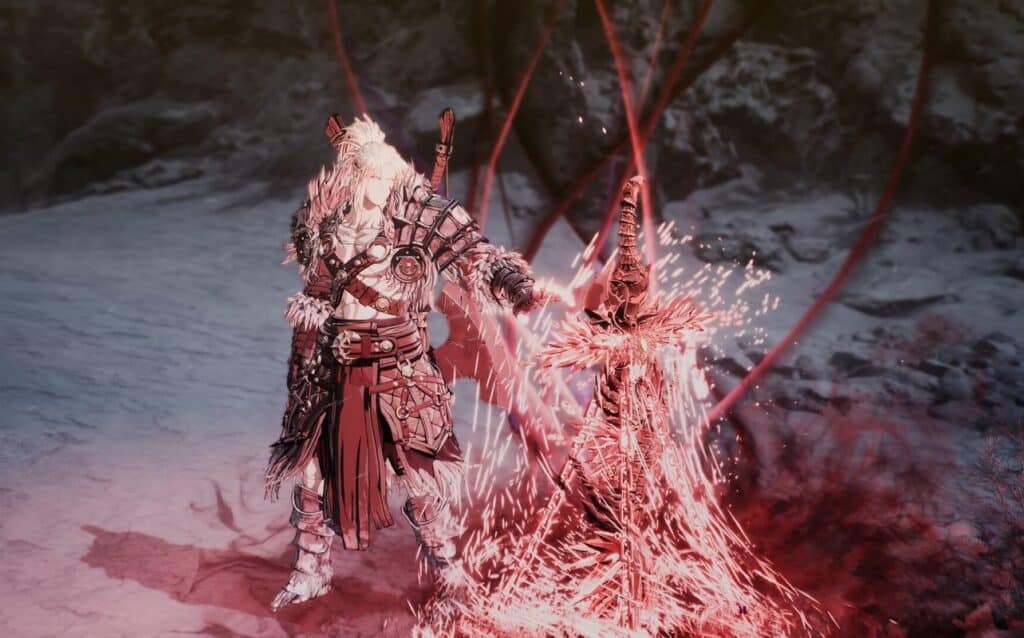
Precision, Power, and Punishment
Combat in The First Berserker: Khazan is aggressive and unforgiving. It’s not enough to swing your weapon and hope for the best—you have to commit to every action. Enemies strike fast, counter mistakes, and punish hesitation. Parrying, dodging, and managing stamina aren’t just useful—they’re necessary for survival. It’s a system that shares some DNA with Sekiro: Shadows Die Twice and Wo Long: Fallen Dynasty, blending fluid movement with tight timing. Fights aren’t just about endurance; they’re about control.
Khazan wields three different weapon types, each shaping how battles play out. Dual Blades focus on speed and relentless offense, letting you weave through enemy attacks while dishing out fast strikes. Greatswords take the opposite approach—slow but crushingly powerful, able to stagger foes and break through their defenses. Spears offer a middle ground, giving you reach without sacrificing too much speed. No weapon is a safe bet; the best choice depends on the enemy in front of you.
Each mission is structured as a self-contained battlefield, with multiple routes leading to different encounters. One path might lead to an ambush, another to a hidden upgrade, and another straight to the next fight. While the levels aren’t open-world, there’s room for exploration, and taking the time to search for better gear or shortcuts can make a difference. You’re constantly adjusting—not just to enemy placements but to what the game throws at you next.
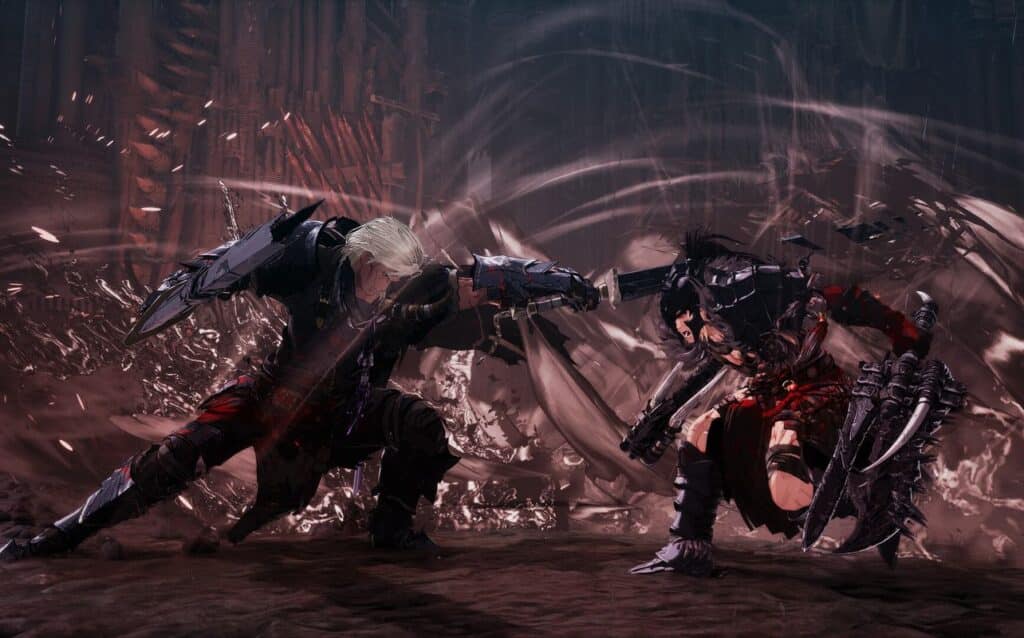
Combat Evolves With You
The more you fight, the more you refine your approach. The First Berserker: Khazan doesn’t just throw tougher enemies at you—it forces you to adapt. Weapons and abilities aren’t static; they grow alongside your skill. Upgrades unlock new combos, allowing you to tweak your playstyle as you progress. Dual Blades become more efficient at stagger-locking enemies, Spears gain counter-focused abilities, and Greatswords get even better at breaking enemy defenses. The more you commit to a weapon, the more it feels like an extension of your playstyle.
But this isn’t a game where you can just overpower your way through. Mastery comes from knowledge as much as from upgrades. Learning enemy attack patterns, recognizing openings, and knowing when to switch tactics matter more than pure damage numbers. It’s not just about picking the right weapon—it’s about using it with purpose.
Survival by Skill
Combat in The First Berserker: Khazan isn’t just about dealing damage—it’s about understanding your enemy and adapting fast. Some fights let you find a rhythm, but others force you to rethink your entire approach. One encounter that caught me off guard was a battle against a heavily armored elite enemy blocking a key passage. At first, I tried using the Spear, thinking I could poke at them from range. That didn’t work. Their shield absorbed every hit, and the moment I overextended, they knocked me flat.
After a few attempts, I switched to Greatswords, aiming to break their guard with heavier attacks. That didn’t work either—they punished slow movements with brutal counters. Eventually, I realized the fight wasn’t about brute force at all. I needed to bait out attacks, sidestep at the right moment, and land just a few precise strikes before backing away. Once I adjusted, the fight shifted from overwhelming to manageable.
Then there are the boss fights, where even small mistakes can cost everything. Aratra, the boss at the end of the Strange Stench mission, was a wake-up call. He fought with speed and aggression, countering every opening I left. I started the fight using Dual Blades, trying to match his pace, but it backfired. He was faster, and I barely had time to recover from mistakes before he struck again. Switching to the Spear helped me keep distance, but I still couldn’t find an opening. Only when I focused on parries did I start making progress. By the time I landed the final hit, it didn’t feel like I had beaten him—I had survived him.
Between fights, progression comes from Lacrima, the resource used to level up stats. The game doesn’t flood you with power—you grow by making small adjustments over time. Gear upgrades matter just as much as stat boosts, with different weapons and armor offering bonuses that subtly change how you approach fights. You can also summon Phantoms to assist in battle, but they’re not a crutch. They help, but victory still depends on how well you read each encounter.
The First Berserker: Khazan never lets you get comfortable. Every battle is a puzzle, every mistake is punished, and every victory is earned. It’s not about grinding for better stats or finding an overpowered weapon—it’s about sharpening your skills until the game has nothing left to throw at you.
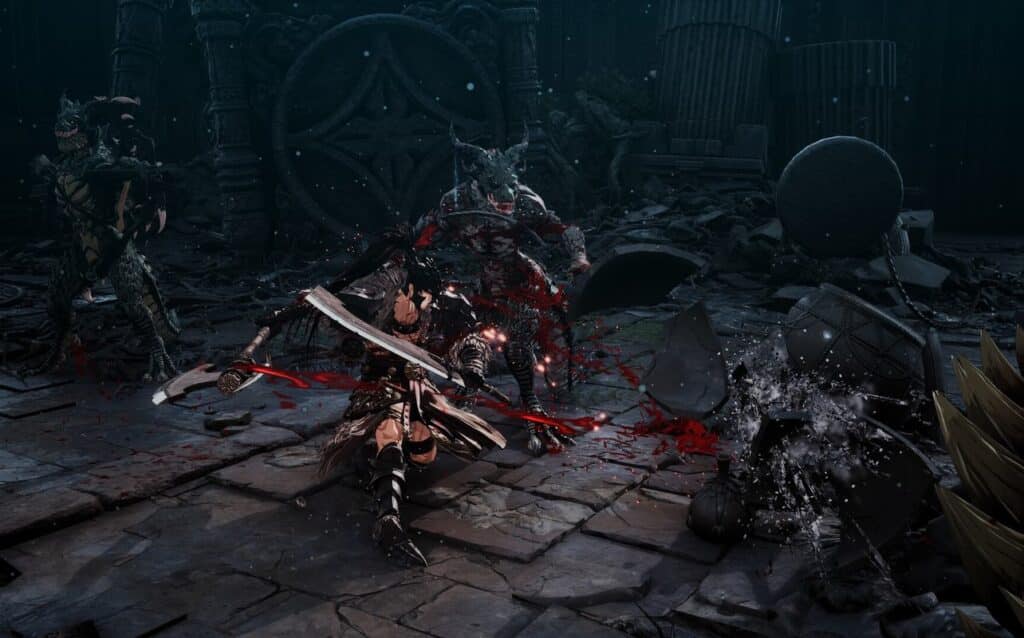
A Bold Style That Matches the Action
The First Berserker: Khazan goes for a cel-shaded art style, giving everything a clean, sharp look that makes characters and attacks stand out. Khazan moves smoothly, whether dodging an incoming strike or landing a heavy blow. Combat animations feel weighty, making each swing and parry satisfying. Special abilities and finishing moves come with bold visual effects, making sure you never miss a big moment without overloading the screen.
The environments match the game’s brutal tone, with battle-scarred landscapes and dark interiors creating a grim atmosphere. The lighting makes sure every area feels distinct, balancing deep shadows with bright highlights. Some locations are more detailed than others, but the cel-shading keeps the world consistent and easy to read, even in the most chaotic fights. It’s not going for realism, but the art style makes sure everything is clear and responsive in motion.
The soundtrack shifts with the action, using orchestral pieces and heavy percussion to keep up the momentum. Boss fights are backed by fast, dramatic tracks that add to the pressure, while quieter moments rely on slower, tension-building music.
Combat sounds hit hard, from the clash of steel to the impact of a well-timed counter. Dodging and parrying feel even better with the right audio cues, helping you react at the right moment. Voice acting is solid, with Khazan delivering his lines with the right intensity, though some side characters sound more reserved.
Some areas could use a little more variety, but the cel-shaded visuals, smooth animation, and strong audio design keep Khazan feeling distinct. The game puts its focus where it matters—making every fight feel as good as it looks.
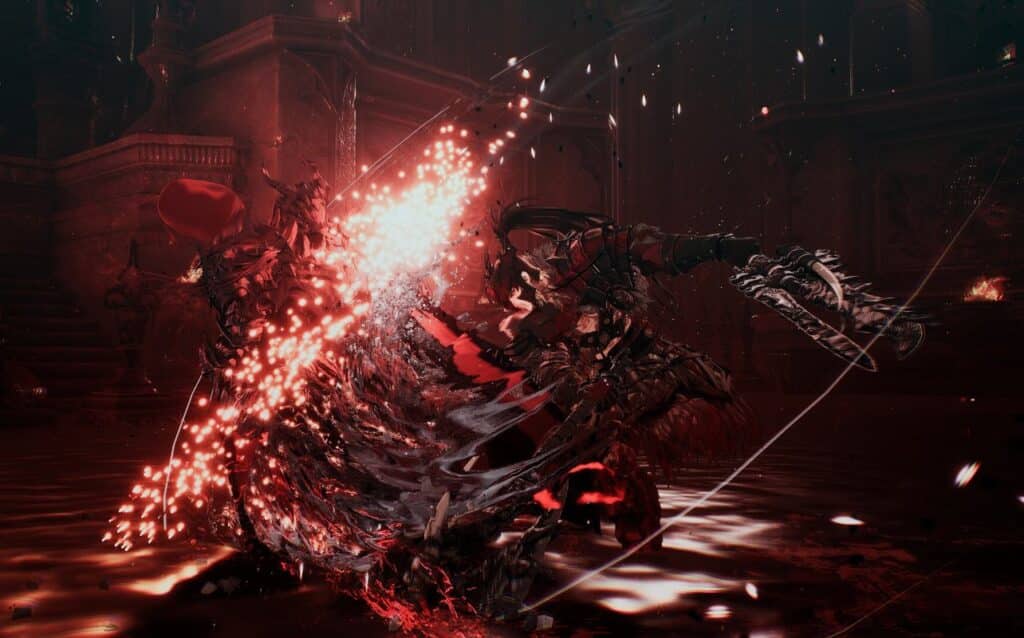
A Relentless Soulslike Worth Mastering
The First Berserker: Khazan doesn’t try to reinvent the Soulslike formula, but it refines what makes the genre so satisfying. The combat is fast, punishing, and rewarding, forcing you to master every move. The boss fights demand precision, making each victory feel earned. The progression system gives you real control over your playstyle, whether you’re sharpening your skills with a specific weapon or finding the right upgrades to complement your approach.
At the same time, the story doesn’t leave a lasting impact, and some environments start to feel repetitive. The game’s strengths lie in its mechanics, not its narrative. If you’re here for deep lore and world-building, you won’t find much beyond what’s needed to push the action forward. But if you’re looking for a combat system that tests your patience, skill, and adaptability, Khazan delivers.
This is a game built for Soulslike fans who enjoy a challenge. It doesn’t hold back, and it expects you to learn from your failures. Some fights will feel overwhelming, and some enemies will shut you down repeatedly. But if you’re willing to push through, adapt, and master its mechanics, the payoff is worth it.
The First Berserker: Khazan

Summary
The First Berserker: Khazan delivers fast, punishing combat and challenging boss fights that reward mastery. Its mission-based structure keeps battles focused, while deep weapon progression lets you refine your playstyle. The story sets up the action well but doesn’t leave a lasting impression, and some environments start to feel repetitive. If you’re a Soulslike fan looking for a tough, skill-based experience, this one is worth your time—just be ready for a fight.
As always, remember to follow us on our social media platforms (e.g., Threads, X (Twitter), Bluesky, YouTube, and Facebook) to stay up-to-date with the latest news. This website contains affiliate links. We may receive a commission when you click on these links and make a purchase, at no extra cost to you. We are an independent site, and the opinions expressed here are our own.









